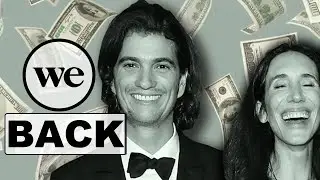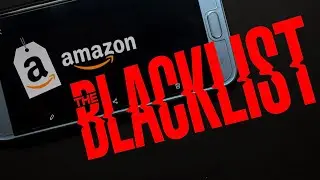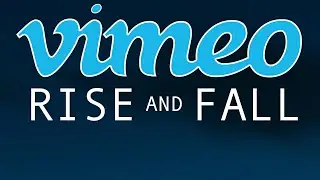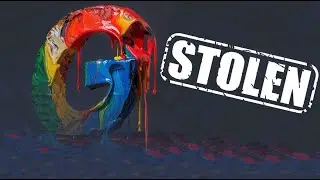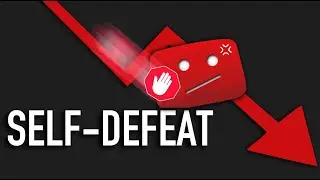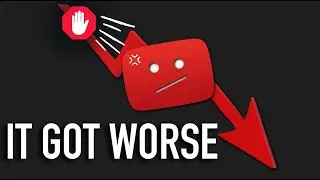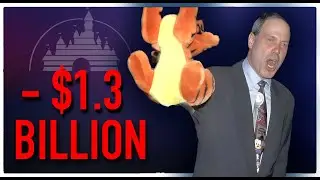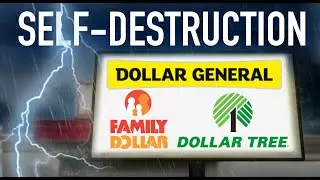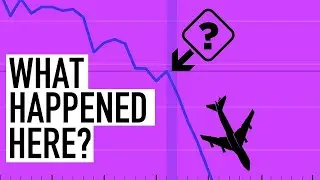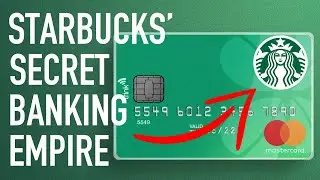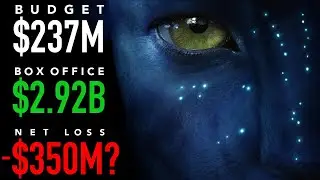The TERRIBLE Economics of Vimeo
Why is no one talking about the slow painful quiet DEATH of Vimeo?
Once upon a time a video sharing and hosting company called Vimeo became a publicly traded company on the stock market. It had a surge in demand and popularity during the worldwide shut down and investors jumped at the opportunity. This led Vimeo's initial stock to be valued as one of the highest in recent history.
The video software and management platform did extremely well during the twenty-twenty shut down. In June of twenty twenty one the company was growing revenue by forty one percent year over year. This was driven by a jump in subscriber growth which started when everyone was forced to stay at home, which also led to a growth in the average revenue brought in per user.
The company capitalised on this growth by getting listed on the stock market in twenty twenty one but Vimeo’s stock prices have fallen off a cliff since then and are currently down by around ninety percent.
Vimeo is a play on the words "video" and "me”. It is a video-sharing platform that allows users to upload, edit and watch videos.
Unlike YouTube, everyone and anyone can watch content on Vimeo free of ads.
So How Does Vimeo Make Money? Vimeo makes most of its revenue from its content creators that pay a subscription fee for professional accounts.
And this is the first problem with Vimeo’s business model.
YouTube makes more money because it has more viewers watching ads, while Vimeo relies on a smaller group of people who choose to pay for special features.
The challenge for Vimeo is that not as many people will choose to pay for these extra features when compared to the larger number of people who will watch YouTube for free.
And this model can very quickly lead to a cycle of decline. If fewer viewers watch content, creators will make less money, which will lead to less content on the site, which leads to fewer visitors to the site and so on.
Vimeo’s Pro members are able to monetise their content through different methods like Vimeo On Demand, which allows users to buy or rent content behind a paywall. This pro membership also allows content creators to give their fans unlimited access to their content through a monthly subscription fee with Vimeo only taking 10% of the revenue plus processing costs.
Although Vimeo has managed to stay in business for twenty years without using the YouTube ad revenue model, it is much harder to stay profitable using a subscription model and this model also makes it almost impossible to take market share away from YouTube.
This leads on to the next problem. YouTube is owned by Google. Google dominates search engines and prioritises YouTube videos over video content from other platforms like Vimeo.
Another reason why Vimeo is not as popular as it could be is there are extremely limited features for free basic users when compared to YouTube. For instance, there are features that are only available to Pro Vimeo members but YouTube offer the exact same features for free. An example of this is Vimeo offers great back end analytics. However, in order to dig deep into statistics and get useful and detailed information, you will need to pay. While YouTube provides all this information for free.
Basic free Vimeo accounts also have upload limits, limited access to their online video editing tools and limited access to uploading with higher video quality. While YouTube provides all of these types of features for free and with no limitations.
Things looked like they would turn around for Vimeo when they planned to replicate the Netflix model. However, the company eventually abandoned the project after spending tens of millions on original content and programs.
But Vimeo’s overall loss of popularity made more and more Pro members question whether or not they were still getting enough value for their monthly membership subscription fee.
Vimeo sent ultimatums to video creators who are using a high amount of bandwidth and asked them to pay a higher subscription fee or leave the platform. This caused a huge amount of confusion and panic over whether existing pro members would potentially lose their video work if they were not able to afford the new higher fees.
This gamble led to a max exodus from the site. The stock market responded with a small jump in price upon announcing the new strategy but then it later continued on its downward trend.
As audiences continue to fall, so does growth and their stock price. But it seems that Vimeo are determined to stay with their current business model so it is hard to see how the company will ever recover from their never ending downward spiral while YouTube continues to aggressively expand and scoop up more marketshare.
Music:
From Russia With Love - Huma-Huma
Decimate - Jeremy Blake
Dream It - TrackTribe
W. A. Mozart, Symphony No.38 in D major - A Far Cry
Sub Urban Cradles Piano Cover










